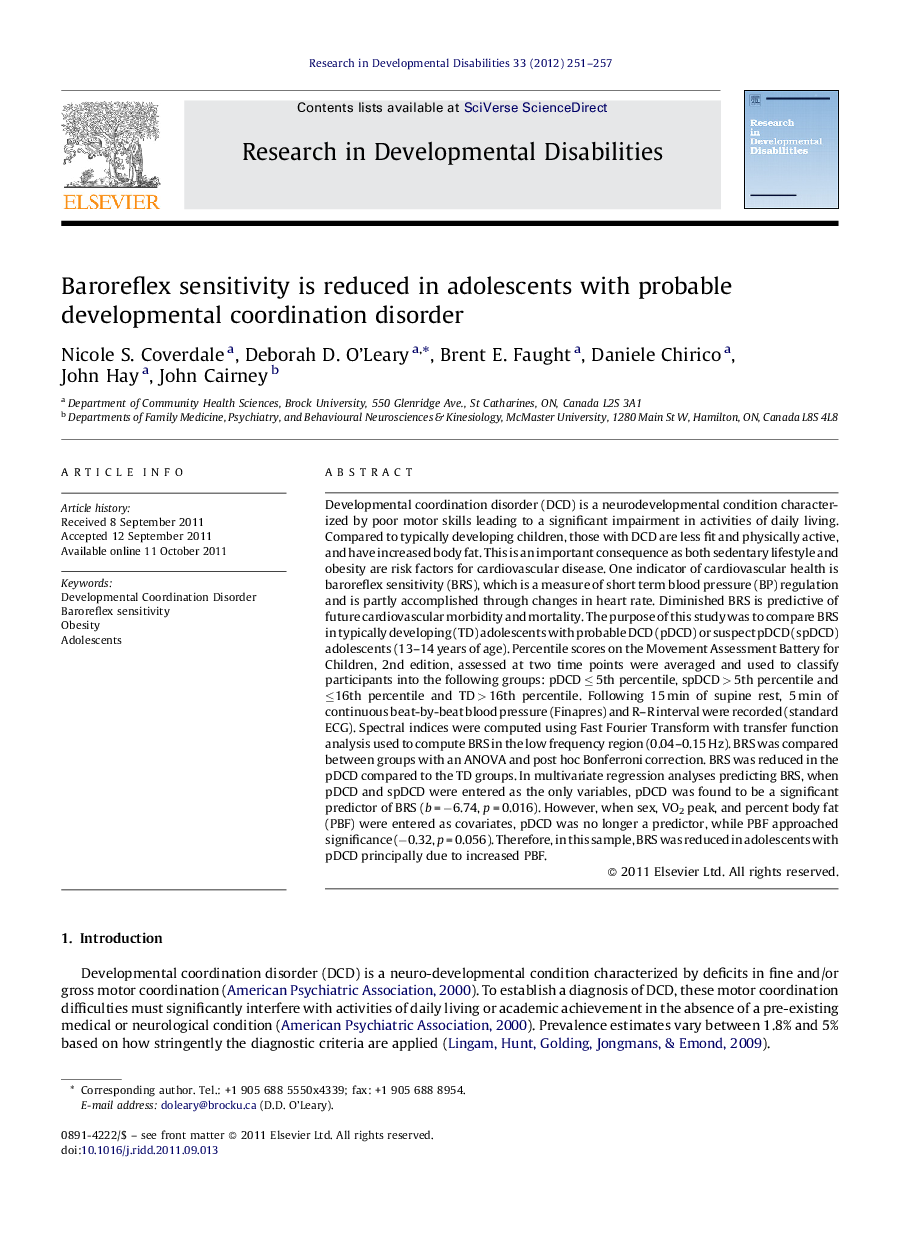| Article ID | Journal | Published Year | Pages | File Type |
|---|---|---|---|---|
| 371648 | Research in Developmental Disabilities | 2012 | 7 Pages |
Developmental coordination disorder (DCD) is a neurodevelopmental condition characterized by poor motor skills leading to a significant impairment in activities of daily living. Compared to typically developing children, those with DCD are less fit and physically active, and have increased body fat. This is an important consequence as both sedentary lifestyle and obesity are risk factors for cardiovascular disease. One indicator of cardiovascular health is baroreflex sensitivity (BRS), which is a measure of short term blood pressure (BP) regulation and is partly accomplished through changes in heart rate. Diminished BRS is predictive of future cardiovascular morbidity and mortality. The purpose of this study was to compare BRS in typically developing (TD) adolescents with probable DCD (pDCD) or suspect pDCD (spDCD) adolescents (13–14 years of age). Percentile scores on the Movement Assessment Battery for Children, 2nd edition, assessed at two time points were averaged and used to classify participants into the following groups: pDCD ≤ 5th percentile, spDCD > 5th percentile and ≤16th percentile and TD > 16th percentile. Following 15 min of supine rest, 5 min of continuous beat-by-beat blood pressure (Finapres) and R–R interval were recorded (standard ECG). Spectral indices were computed using Fast Fourier Transform with transfer function analysis used to compute BRS in the low frequency region (0.04–0.15 Hz). BRS was compared between groups with an ANOVA and post hoc Bonferroni correction. BRS was reduced in the pDCD compared to the TD groups. In multivariate regression analyses predicting BRS, when pDCD and spDCD were entered as the only variables, pDCD was found to be a significant predictor of BRS (b = −6.74, p = 0.016). However, when sex, VO2 peak, and percent body fat (PBF) were entered as covariates, pDCD was no longer a predictor, while PBF approached significance (−0.32, p = 0.056). Therefore, in this sample, BRS was reduced in adolescents with pDCD principally due to increased PBF.
► We examined baroreflex sensitivity (BRS) in adolescents with probable DCD (pDCD). ► Decreased BRS is predictive of cardiovascular morbidity and mortality. ► Adolescents were split into three groups based on M-ABC-2 percentiles. ► The pDCD group had reduced BRS compared to typically developing peers. ► BRS was reduced as a result of higher percent body fat in the pDCD group.
